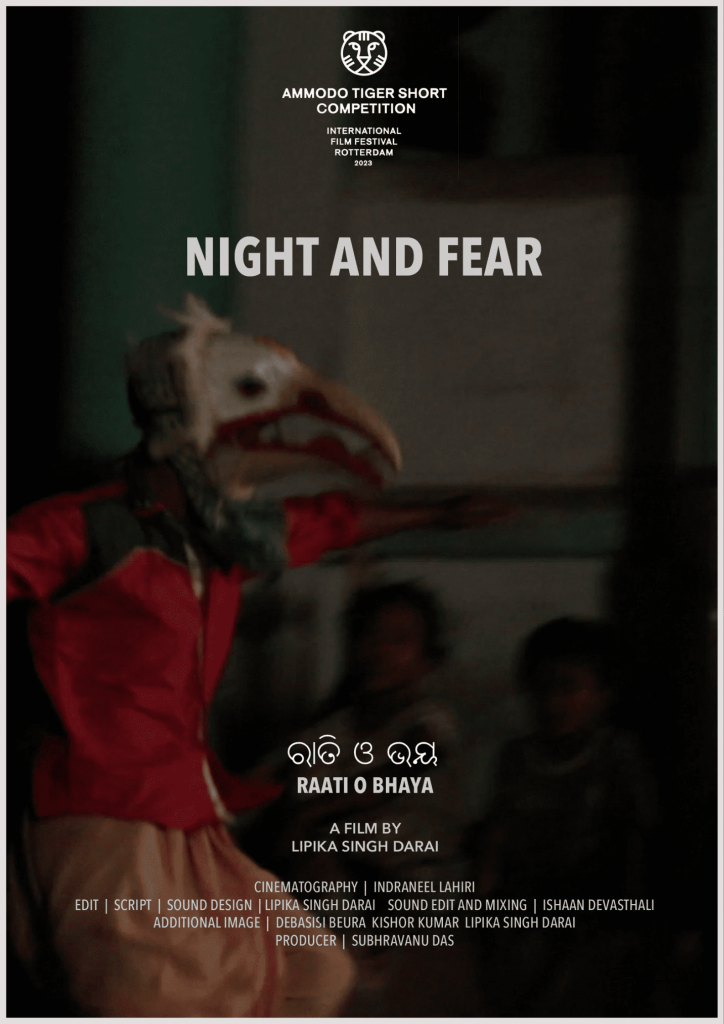In her 2016 film Cameraperson, American cinematographer and documentary filmmaker Kirsten Johnson provides ‘an incomplete list of what the cameraperson enables,’ giving a rundown of the powers a documentary filmmaker holds and the privileges this profession bestows.
Towards the end of that list, there are two phrases: Magical thinking and suspension of time. Meaning, according to Johnson, with her camera and methods of audio-visual storytelling the documentary filmmaker can manipulate time, the very substance of reality, and render in the material world things magical, by creating connections that are beyond the borders of the natural-supernatural.
All of this sound to the ears like wishful thinking, stuff that filmmakers only dream of, until you watch Lipika Singh Darai’s Raati o’ Bhaya (Night & Fear), a documentary/personal essay that had its world premiere at the International Film Festival of Rotterdam, 2023, in the Ammodo Tiger Short Competition, and bears similarity to Cameraperson as both the films are syntheses of ‘residual materials,’ footage shot for other projects but not used, gathered from the archives of the filmmakers.
Night & Fear though, is more ethereal, as it begins with the sight of an unbroken stream, flowing gently, on a wide screen, the gurgling of the water, that soothing sound, calming your nerves, until on the right half of the screen, appears something dry, a patch of land or bark of a tree perhaps, seconds later, appearing again, but on the left, featuring an alert chameleon, with the accompanying sound of the humming of crickets, setting the tone for rest of the film as the pattern repeats itself.
This pattern of the interplay between the screen full and split in half, with overlapping images, juxtapositions of the dark with the light, the still with the shaking, the vibrant with the dull, and the intimate with the detached, which creates contrast, conflict, confusion, but also cohesion and convergence, this pattern is something Rati o’ Bhaya inherits from its sister film, Kanki o’ Sapo (Dragonfly & Snake), the first film in this Darai’s two-volume personal essay.
Kanki o’ Sapo, which won the National Film Award for best narration in 2014, is framed as a letter from the filmmaker, living in Mumbai, to her grand aunt, faraway in her village. This letter carries bits and pieces of atmosphere of the city and its sounds – people chanting in trains, someone playing a violin in distance, and the normal chatter of a restaurant – along with the calls of someone lonely, trapped in a crowd, longing for some tender connection from the past. And then Darai speaks about her childhood, how sometimes while searching for crabs she put her hand inside holes that housed snakes, making her scream at this startling discovery, and how that fear still nests inside her even as an adult.
So, she puts fear at the center of Raati o Bhaya. But here the fears that are examined go beyond the personal. Though individual biases, prejudices and anxieties are still a subject here, the focus, many a times, shifts elsewhere, towards our collective ignorance, our prejudices, anxieties, and our fear of the strange and the unknown. For example, in the film, when women are branded witches and tormented in broad daylight, we are prompted to question our own morals and ethics, and our relationship with stories and gossips, which we often rely on to make sense of things beyond our comprehension.
Furthermore, we’re confronted with the fear of things that are decaying and on their way to death, like ingredients of out indigenous culture, our folk art, and the environment, the dying streams and forests with which our bond with the natural world is also disappearing.
Above all, Darai, once frustrated with in the process of trying to make a feature film, and after suffering through several illnesses, sat down to edit and craft this film. While Raati o Bhaya evidently has given her a medium to achieve calmness after a catharsis long overdue, the film, with its attempt to confront our collective fears with a camera, has presented us a wonderful opportunity to experience the magical, the supernatural. An opportunity we should take up, wholeheartedly.

